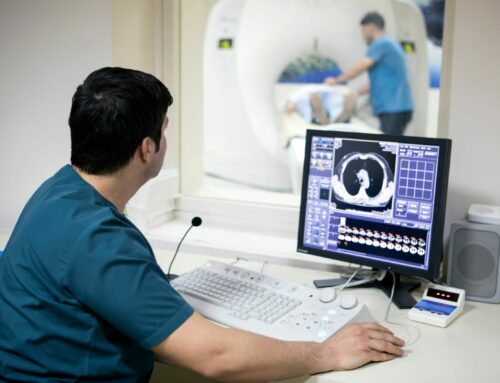By Krithika Srivats, VP Healthcare Clinical Practice and New Solutions at HGS |
Hospital leaders say they are nearing the “danger zone” for hospital claim denial rates, with a 20% increase observed in the past five years, according to Harmony Healthcare. Most of these clinical denials are related to medical necessity, length of stay, level of care determination and authorization. These types of denials present unique challenges because they require additional medical or clinical clarification for payment, making them more complex.
For resource-constrained health systems, these challenges are even tougher to address as many face clinician shortages as they battle the pandemic on the frontlines. Now is the time for providers to invest in technology and innovative business transformation to reduce clinical denials. This technology can help not only improve the financial health but more importantly allows the highly trained clinicians to focus on care for their patients.
Healthcare organizations can implement technology to be more effective in reducing clinical denial rates in three key ways:
1. Prior Authorization Automation
Prior authorization denials can be an infuriating headache and place many administrative holds on clinical operations. In some cases, clinicians spend hours gathering information for submission only to have the prior authorization denied by the payer.
According to the AMA, 91% of physicians report that prior authorization has led to care delays, with 75% reporting abandoned tests or procedures altogether. With hundreds of health plans, each with their own unique rules, payer processes need to be more streamlined and transparent for providers to understand which services require authorizations and how to proactively gather that documentation. There’s no process to determine which workflows can be automated and lessen the load on clinical staff.
However, the new CMS Interoperability rules have allowed payers and providers to communicate through electronic data exchanges more regularly and seamlessly and that process is becoming more efficient while reducing the provider and patient burden. Additionally, by implementing automation, it’s easier for clinical staff to identify payer rules for prior authorizations and ensure the correct documents are submitted the first time around and ultimately, limiting denied claims. Providers should take advantage of and leverage interoperability standards and use the electronic authorizations portals to request for prior authorizations and take the administrative burden off the frontline clinical staff.
By using automation to match thousands of unique payer rules to the correct clinical documentation would significantly decrease denial rates. Patients no longer wait days or even weeks for their critical procedures, and providers are free from the administrative stranglehold of prior authorization denials.
2. Improving Clinical Review Efficiency with Natural Language Processing & Machine Learning technology
Over 40% of claims get denied and of which 50% are due to reasons requiring medical records review and validation of medical necessity. With large volumes of cases requiring the time and expertise of trained clinical staff, providers are perpetually in a state of backlog which ends up in an overdue state due to timely filing limits, thereby never collecting the receivables.
So, how can providers prevent the backlog? How can providers make the reviewing process more efficient, so they don’t end up in a continuous state of backlog?
Technology plays an integral role in both scenarios. To prevent this, and to be more proactive, technology such as NLP is available to enhance the speed and efficiency of the nurse who is reviewing the clinical denial and making notations on how to overturn that denial.
NLP capabilities combined with machine learning (ML) methodology can train the machine to understand which of the medical records features are important in defining the rationale for medical necessity which is required to overturn that specific denial. This technology goes a long way in helping to ease the burden on clinical staff working on the frontlines.
For example, if one nurse without the technology can review 10 cases a day, once you implement NLP technology, that same nurse can likely now review 15-20 cases per day. Again, this comes down to reducing the clinician’s requirement to overturn these denials by automating their work and making it more efficient.
3. Robust Dashboard and Analytics to Help Prioritize Claims to Focus On
In an operative and agile process, a robust operational dashboard to organize everything in one place allows clinical teams to determine which claims to pursue first. A good clinical denials program requires a functional dashboard that allows clinicians to focus on the right opportunities, prioritize the right areas and thereby, have an agile program that meets the requirements.
The COVID-19 pandemic has shed light on this need now more than ever because when working with limited resources, it’s critical to know which denials, which provider type, and which case types to focus on. The dashboard helps identify which areas are the doors to preventative solutions versus which ones are lagging.
To this point, a good robust operational dashboard and robust analytics are critical.
Once the areas above are addressed, healthcare organizations can focus on the number of appeals that the hospital can address, the number of dollars collected, and effectively utilize clinician resources. These three strategies will allow health systems to take proactive steps in the clinical denial process to reduce rates and ease the burden on clinicians.
 About the Author
About the Author
Krithika Srivats is the leader of HGS’s Healthcare Clinical Practice. She has more than 20 years of experience in the healthcare industry with a diverse background in patient care, strategic disease management in the field of Alzheimer’s disease and related dementias, hospital administration and operations, and integrated solution designing. Since joining HGS in 2010, Krithika has developed solutions for healthcare providers based in North America and Asia.












